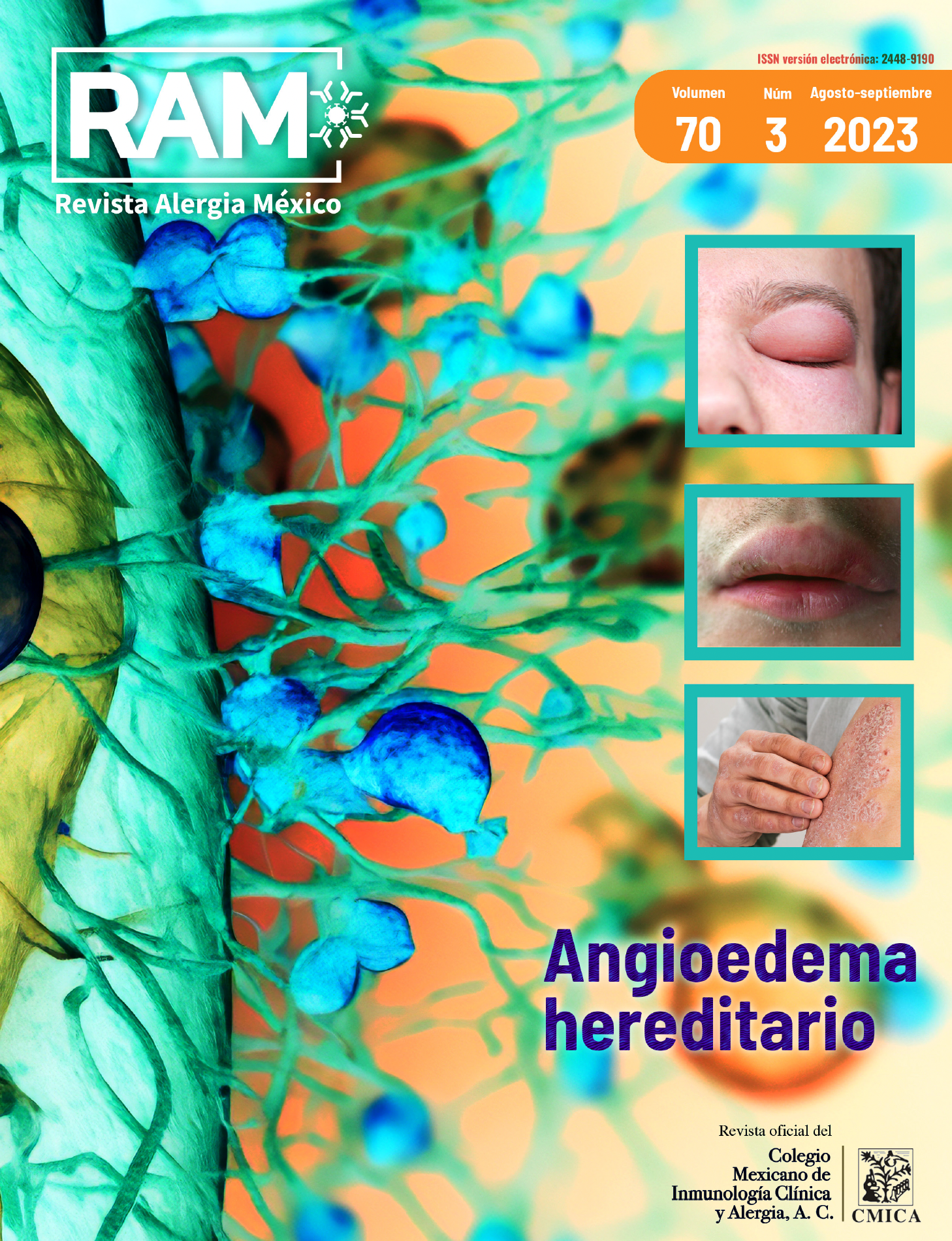Abstract
Background: Perioperative anaphylaxis can be life threatening. The global incidence is estimated to be 1 in 10,000-20,000 procedures. The most common agents are neuromuscular blockers, latex, and antibiotics. There are very few reports of allergies to inhaled anesthetics, are considered relatively safe in patients with drug allergies.
Case.
A 12 year patient was admitted to oncology, diagnosed with acute lymphoblastic leukemia. History of two perioperative hypersensitivity reactions. In the first event, lidocaine and rupivacaine were administered, he presented urticaria, managed with antihistamine. On the second occasion, he received only sevoflurane and presented anaphylaxis, treated with intramuscular adrenaline. Subsequently, during intrathecal therapy, anesthesia with sevoflurane, he presented rash and arterial hypotension, treatment again with adrenaline, with total remission of symptoms. Retrospectively Brighton criteria level I of certainty, classified as severe by Brown.
Hypersensitivity to sevoflurane was suspected, ruling out other anesthetics such as lidocaine and rupivacaine with negative intradermal skin tests. Molecular components for latex were requested with negative results for Hev b 1, Hev b 3, Hev b 6. Due to the above and associated with the characteristics of the drug, a basophil activation test for sevoflurane was performed with an activation percentage of 50% (positive). Perioperative anaphylaxis due to sevoflurane is confirmed.
Discussion: There is little information on allergy to inhaled anesthetics, due to their volatility it is difficult to perform conventional tests for their diagnosis.
Conclusion: All drugs involved in perioperative hypersensitivity reactions should be considered to establish adequate and safe treatment alternatives for this group of patients.
References
Di Leo E, Delle Donne P, Calogiuri GF, Macchia L, Nettis E. Focus on the agents most frequently responsible for perioperative anaphylaxis. Clin Mol Allergy. 2018;16:16. Published 2018 Jul 9. doi:10.1186/s12948-018-0094-7
Simonini A, Brogi E, Gily B, et al. Anaphylactic Shock During Pediatric Anesthesia: An Unexpected Reaction to Sevoflurane. Front Pediatr. 2018;6:236. Published 2018 Sep 7. doi:10.3389/fped.2018.00236

This work is licensed under a Creative Commons Attribution-NonCommercial 4.0 International License.
Copyright (c) 2023 Revista Alergia México

